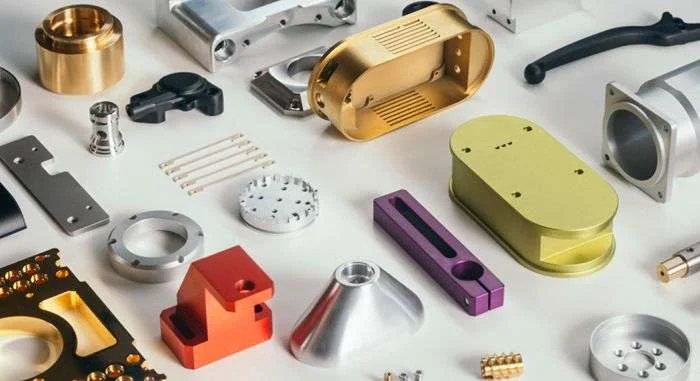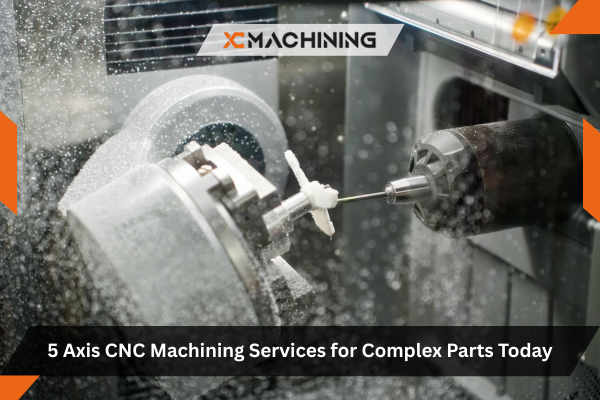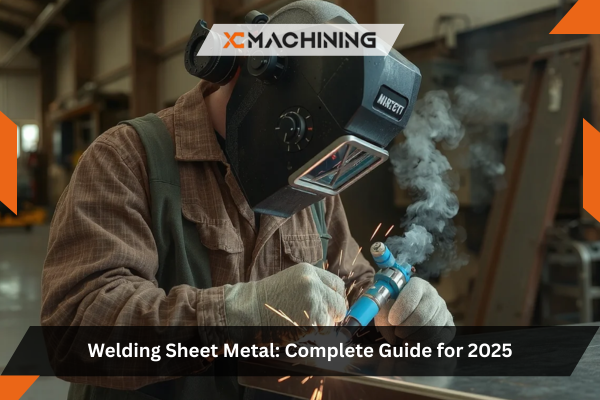Metals, plastics, and composites are some of the engineering materials you can choose from for your parts production when using computer numerical control CNC machining metal. However, metals are the most widely utilized CNC engineering material across numerous industries.
In this article, we’ll highlight the CNC metal process, different metal machining operations, and typical metals suitable for CNC machining. Do read on.

Role of CNC Machining Metal Parts Manufacturing
In metal production, CNC machining metal and machining play a variety of roles. More precisely, they are employed to carry out several essential tasks, such as:
Metal Prototyping
A lot happens before a part is produced, from important steps like creating a CAD design to designs undergoing virtual testing and analysis.
But to evaluate the concept’s functionality, manufacturers require a metal prototype. While many processes are used in prototyping, manufacturers usually require CNC machining to do so rapidly.
Metal prototyping using CNC machining guarantees repeatability and consistency. It is also highly precise and time-saving while being cost-effective. Another benefit of CNC machining metal for metal prototypes is the versatility of the process, as it works with a wide range of metals and non-metal materials.

Low-Volume Production
Low-volume or small-batch CNC metal machining parts refer to producing parts or products in small batches, often ranging from 10 to 1000 pieces. It is one method that manufacturers use to reduce the cost of metal production. Producing small quantities lowers CNC machining costs and facilitates design changes without causing losses.
How Does CNC Metal Machining Work?
CAD Design
The first step involves creating a computer-aided design (CAD) in 2D or 3D format using CAD software. This software enables the rendering of any part that fulfills the necessary technical specifications.
It is essential to keep in mind that the characteristics of the metal workpiece considerably impact the design and outcome.
Programming
Following this, the CAD file needs to be converted into a file format that is compatible with a Computer Numerical Control CNC machining metal. Computer-Aided Manufacturing (CAM) software inspects the CAD file and generates programming codes. The codes broadly fall into two categories: Machine code (M-Code) and Geometric code (G-Code).
Machine Setup
Setting up the CNC machine necessitates two steps. Firstly, it entails ensuring the machine is in good working condition through a thorough check.
The next step involves securely attaching the metal workpiece to the machine. While attaching the requisite equipment and parts, the metal workpiece can be directly inserted into the machine.

Machining Metal Workpiece
Upon configuring the CNC machine, you can initiate the CNC program. The CNC program represents the core of the CNC machining metal functionalities. It directs the machine’s movements and actions to yield the desired result, making sure the machined metal parts adhere to the manufacturer’s specifications.
Common Metal Types for CNC Machining
Several metals and alloys are used in the CNC machining process, but we’d discuss the most common ones here. They include:
Steel
One of the most popular metals for precise CNC machining metal is steel. It is an alloy with up to 2% carbon, iron, and various additional elements in different proportions. Four main types of steel are used in CNC machining: Carbon, Stainless, alloy, and tool. It is important to note that these steel types have subcategories and grades. For instance, stainless steel has grades 304, 316, 410, 430, and 2205.
Nonetheless, if your machined part will be used in a humid climate, steel might not be the best metal choice due to its high susceptibility to corrosion.
Aluminum
Similar to steel, aluminum is popular for its use in many different sectors. However, aluminum’s resistance to corrosion and lightweight set it apart. Generally, aluminum is 2.5 times less dense than steel and is less prone to fracture during CNC machining.
Common aluminum alloys that find application in CNC machining metal include the 2024, 6061, and 7075. There are also uncommon aluminum alloys used for CNC machining, including 3003 and 5052.

Brass
Zinc and copper are the two metals that makeup brass. Brass is known for being stable, strong, medium hardness, and—above all—being easily machined. Unlike most soft metals used in CNC machining, brass alloys won’t strain the machinery unnecessarily.
Unlike most soft metals used in CNC machining metal, brass alloys actually won’t put unnecessary strain on the machinery. There are several types of brass alloys for CNC machining including C360, C230, and C220.
Brass is prone to stress corrosion cracking, which can be a significant problem, particularly when ammonia or ammonia-based solutions are present. To overcome this restriction, you must apply heat treatments like annealing to the workpiece during post-processing.
Copper
Copper is one metal frequently machined for use in various industries. It has superb surface quality, strong electrical and thermal conductivity, and excellent machinability.
CNC-machined copper components are commonly used for circuit boards and electromagnets in the electronics and semiconductor industries. However, the main drawback with copper alloys is that they corrode easily by sulfides, halogens, and solutions containing ammonia.

Titanium
Titanium is a highly sought-after metal for many industries due to its exceptional strength-to-weight ratio and resistance to corrosion. In addition to being a little expensive material, CNC titanium machined parts are of great quality. It also favors almost all surface finishing techniques like electrophoresis, powder coating, and bead blasting.
There are different grades of titanium for CNC machining metal, including grades 1, 2, 3, 4, 11, and 12. These grades have different levels of strength, corrosion resistance, and formability.
Different CNC Processes on Metal Machining
There are different CNC processes used for metal machining. Examples of the most typical CNC machining processes include the following:
CNC Milling
The material is removed from the workpiece using revolving multi-point CNC cutting tools in the milling process. The workpiece is normally fed to the cutting tool by the CNC machining metal in the same direction as the cutting tool’s rotation when using CNC milling.
A milling metal workpiece is a specific shape that involves revolving multi-point cutting tools. Chamfer, end, and helical mills are milling tools that can be oriented vertically or horizontally.

CNC Turning
CNC turning is an extremely accurate subtractive machining method operating on the same principles as a lathe machine. The cutting tool is pressed against a rotating workpiece to remove material and provide the required shape.
While the raw material rotates quickly, the turning center or lathe remains in place. A single-point cutting tool aids in shaping the material as the workpiece rotates along the dual CNC machining metal axis movement. The input computer program controls the turning center or lathe, which guarantees the manufacturing of highly accurate components.
CNC Drilling
The drilling process uses metal workpiece cylindrical holes using multi-point drill bits. Furthermore, drilling creates vertically aligned holes with sizes equal to the drill bit used for the operation by feeding the revolving drill bit through the machine perpendicular to the surface of the workpiece.
For angle drilling operations, this involves specific machine setups and work-holding systems.
Electric Discharge Machining
Electric arcing discharges, or EDM for short, are used in electrical discharge machining (EDM) to produce micro-craters that quickly produce full cuts. EDM, sometimes referred to as spark machining, is utilized in situations where precise tolerances and intricate geometric patterns are needed in hard materials. However, its application is restricted to metal alloys since it requires the base material to be electrically conductive.
Advantages of CNC Machined Metal Parts
CNC machined parts offer certain advantages that may not be achievable with injection molded or 3D printed parts. These are a few of the main advantages of machined metal parts.
Excellent Prototypes
Since CNC machining metal parts may be made as one-offs, they are useful and reasonably priced for metal prototypes. Besides, machining is faster than molding, so research and development teams can rapidly cycle through multiple iterations of an item and then test and evaluate it as needed before putting it into production.

Part Quality Consistency
High standards can be reachable when creating CNC machining metal parts. Perhaps more crucially, clients can establish tolerances that the machinist must adhere to. This implies that the machine operator or machinist can take their time while machining components and details with precise tolerances.
Although injection molds can produce extremely tight-tolerance parts, they do not maintain this standard for every mold. The tight tolerance achieved with earlier produced parts is usually absent towards the end of the mold’s lifespan.
Part Strength
CNC machining metal is sturdier than other manufacturing processes like 3D printing, which may be weaker along one axis due to the piling of materials on each other. This is because CNC machining is a subtractive process, which involves manufacturing the desired part by cutting materials off a solid block, consequently making parts with uniform strength.
Also, CNC-machined metal parts are usually stronger than their molded counterparts. This is because most molded parts have a restriction in their mechanical performance due to the requirements for thin walls.
Faster Lead Times
CNC machining is one of the fastest metal manufacturing processes available today, resulting in a faster lead time. The manufacturing process is also very efficient, contributing to this in part.
Since machining is a one-step process and CNC machining metal centers operate quickly, machined metal parts are easy to create (in small quantities), cutting lead times and enabling a quicker market.
Better Surface Finish
Metal machined parts are free from the surface quality problems that come with molding, like pop at the parting line, jetting, and flow lines. Machined parts can achieve extremely high surface quality standards with only a small amount of post-processing.
Additionally, even without post-processing, machining produces considerably better surface polish than 3D printing. Sanding or chemical treatment is necessary to smooth out any apparent layer lines that 3D printing, particularly FDM printing, may leave on the part’s surface. These layer lines are not present in machined items.
No Minimum Order Quantity (MOQ)
One of their main benefits is that CNC machining metal can produce parts with no minimum order quantity. Fabricating metal tooling is required for molded parts, a labor-intensive operation that usually costs tens of thousands of dollars. On the other hand, because machined parts are cut straight from a blank workpiece, ordering extremely small quantities or even one-off pieces is affordable.

Surface Treatment Options for CNC Metal
After machining, metal parts can be treated to change the texture and appearance of their surface. Finishes can have a practical or aesthetic purpose. The surface treatment options for CNC machining metal include:
- Anodized
- Powder coated
- Bead Blasted
- Alodine Coating
- Black Oxide Coating
- Electroplating
- Passivation
- Brushing
- Polishing
Type of CNC Machines Used in Processing Metal
In modern metal fabrication facilities, there are various kinds of CNC machining metal. Among these are a few of these:
CNC Lathes
This machine creates metal parts by spinning the metal workpiece on a spindle. A cutting tool is used to mold the part into the appropriate shape as the material is turning. They perfectly produce symmetrical products with conical, spherical, or cylindrical geometries.
CNC Grinders
Using a rotating wheel to grind or grate the material into the required shape, grinding machines abrade the material. The tool rotates in place while the workpiece, usually attached to the machine table, moves along the axes X, Y, and Z.

CNC Milling Machines
This CNC machining metal allows for significantly higher precision metal machining than when the process is carried out manually. Cut depth, angle, and direction variations can be programmed into the CNC milling machine. There are different types of CNC Milling Machines, including vertical, horizontal, and multi-axis milling machines.
CNC Drilling Machines
CNC technology can control sophisticated drilling machines, ensuring accurate hole placement in various metal materials. Pecking, also known as interrupted cut drilling, is a systematic process of drilling holes in thick metals.
In addition, numerous drill bits and cutting instruments are installed on a turret in CNC turret drilling machines. Automation makes it possible to swiftly and precisely index the necessary instruments into place for drilling.
Various Applications of Metal CNC Parts
Metal CNC parts’ precision, adaptability, and durability make them useful in various industries. Let’s examine a few of the major industries where CNC machining metal is essential:
Aerospace Industry
Aerospace metal machining is essential to the industry. It guarantees that metal airplane parts are fabricated precisely, essential for safety. Engine mounts, landing gear components, fuel access panels, and fuel flow components are examples of machinable aerospace parts.
Automotive Industry
The automotive sector frequently uses CNC milling machines for both production and prototype. Milling extruded metal into parts like axles, gearboxes, valves, and cylinder blocks is possible.
Defense Industry
CNC machining guarantees the precision and dependability of defense equipment. CNC machining metal is useful for metal parts like radar, weapons, and communication equipment.
Healthcare Industry
CNC machining is necessary for diagnostic tools, surgical instruments, and medical implants. For patient safety, CNC metal parts must have high precision and biocompatibility.
Oil and Gas Industry
The research, refinement, and building of pipelines all involve CNC machining metal. The company manufactures parts for drilling equipment, pumps, and valves.
Choose Xc Machining for Expert CNC Metal Machining Services
When seeking expert CNC machining metal services, Xcmachining comprehensive capabilities make us a reliable choice for your various machining requirements. Whether it’s CNC milling, turning, grinding, or other machining processes, XinCheng is committed to offering one-stop CNC machining services.
From customization options to meet unique project requirements to timely delivery and cost-effective solutions, XinCheng stands as a reliable partner for you to get the expected results in metal machining services. Just get a free quote and start your metal projects!
Conclusion
One of the most important aspects of the industrial sector is CNC machining metal, which produces accurate results for a variety of components. CNC machining’s capability and flexibility ensure consistent outcomes regardless of production scale and type of metal used.
FAQ
What are the tolerances for CNC metal machining?
The designer determines tolerance—the allowed range for a dimension – based on a product’s shape, fit, and functionality. The usual tolerance for metal parts machined by CNC is ± 0.10mm to ±0.05mm unless the designer specifies otherwise.
What is the easiest metal to mill?
Known for its low strength and stability, brass is one of the most affordable and simple metals to process.
What factors affect metal selection for CNC machining?
When selecting a metal for CNC machining, important characteristics are strength, ductility, toughness, fatigue resistance, hardness, and conductivity. Besides, the specific qualities of each metal can cause your machining prices and procedures to vary significantly.





